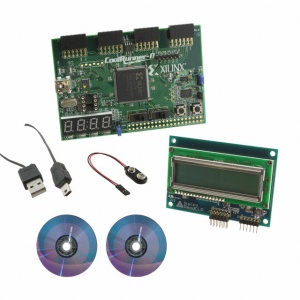Difference Between FPGA and CPLD Architecture

Digital logic chips have always been intimidating for non-technical people, but professionals belonging to engineering sciences are well familiar with them as they are integral part of any engineering architecture.
As the technology is advancing by the day, things like digital logic chips will get more and more smarter and compact.
FPGA (Field Programmable Gate Array) and CPLD (Complex Programmable Logic Device) are two digital logic chips that used for internal architecture. The chips are different in nature and function according to what they are programmed for.
FPGA, a programmable chip, is used for almost all types of digital function. FPGA is smarter than CPLD when it comes to blocks of logic. FPGA can include over one hundred thousand small logic blocks. On the other hand, CPLD can contain just few logic blocks. The number of logic blocks CPLD can contain is usually a couple of thousands.
When it comes to architecture terminology, CPLDs are called coarse grains. On the other hand, FPGAs are usually called “fine grain.” FPGA is best for complex applications while CPLDs are used for simpler applications.
Instructions
-
1
FPGA
FPGA, a logical block, mostly comprises of a lookup table (LUT or Look-Up Table ) and a switch ( Flip-Flop). The LUT is used to apply the logic equations, and generally involves 4-6 inputs and an output. However, it can be considered a small memory, a multiplexer or a shift register. The registry is used to store a state (sequential machine) or a sync signal (pipeline).
Logic blocks are present in large numbers on the chip (a few thousand to a few million in 2007) are interconnected by a matrix of configurable routing.
With FPGA, current densities do not allow manual routing, so this is a tool for the automatic functioning and it helps route that matches the logical scheme created by the designer and the material resources of the chip.
FPGAs are used in applications that require digital electronics such as telecommunications, aerospace, transportation. Due to the advancement in technology, the use of FPGAs has grown exponentially in the last few years.
Modern FPGAs are large enough and contain enough memory to be configured to accommodate a heart processor or DSP to run the software.
- Image Courtesy: rowetel.com
-
2
CPLD
CPLD is created using EEPRO. CPLD is more effective when it comes to tiny gate count designs. CPLDs are found to have more functional delays than FPGAs.
- Image Courtesy: ad7gd.net





